The formula to make a Major scale is the same for every single Major key. The I, IV, and V are the only major chords in a traditional major scale. The remaining chords are minor with the exception of the 7th which is diminished. The scale numbers would look like this I ii iii IV V vi vii I. For example in the key of C the scale would be CDEFGABC.
Since triad chords are built by using every other note from the one you begin on - a C Major chord would be CEG. The 1st note is called the root, after that you count steps away, starting with C - making the 3rd E. G is then 5 steps away from the root making it the 5th.
You can keep extending chords making 6th, 7th, 9th, 11th, 13th chords, and sus4 chords. You also need to know that you can raise and lower notes if desired in the chords you're writing. If you see a C7#9 it means you raise the 9th a half step.
Once you have mastered learning major and minor chords, you can move on to more advanced and complicated chord progressions, like diminished or augmented. For diminished chords, you'll see the root followed by the letters "dim." So, for instance, when playing a Cdim, you would use the notes C, E flat, and G flat. 🤹♀️ Here's a nimble G flat major scale reference which shows the notes and fingering on a piano keyboard. Plus, an interactive tool to play chord progressions and a list of common chord progressions in the key of G♭ major. The key of G Major has a key signature of 1 sharp (F#).
It is the 2nd most popular key among Major keys and the 2nd most popular among all keys. Major keys, along with minor keys, are a common choice for popular songs. The three most important chords, built off the 1st, 4th and 5th scale degrees are all major chords . This is one of the chord trees that will aid in the writing and analysis of music. You can move down the tree but you may not retrograde until reaching the bottom.
There are, of course exceptions including cadencing using the IV to I which is called the Amen cadence because of its use in older church hymns. At the end of a hymn people would sing Amen from the IV to I. A good example of a song that uses an amen cadence is "Let it be" by the Beatles (Amen means let it be!). All chords that have a number immediately after the letter are actually dominate chords with added notes. Dominant chords contain a major triad with a minor 7th. If they are not dominate they will say something like G Maj7 which has a dreamy feel but in the key of C - G is dominate so its notated G7.
A G9, G11,or G13 all can be used as a dominate chord. All dominant chords must contain a seventh, though it is possible to leave out the 5th from extended chords such as 13th chords. The I chord is your musical home but you may go other places during your journey but you usually drive back home using the V to get there.
A Major scale has 7 different notes and then ends back on 1, making a total of 8 notes. The scale degrees are numbered with Roman numerals so that you can use upper and lower case letters. Upper case represents a Major chord, lower case are minor chords, and lower case with a little circle in the upper righthand corner of the Roman numeral is diminished.
In western music chords are traditionally built by using every other note beginning on each scale degree - giving you a choice of 7 diatonic chords in a Major scale. Minor chords, like major chords, contain three basic keyboard notes, a root note, third, and fifth. To play a minor chord, select any root note, then count three half-steps up to the third. From the third, count two whole-steps to find the fifth. As for the key of G flat major, the triad chords are Gb major, Ab minor, Bb minor, Cb major, Db major, Eb minor, and F diminished.
The triad chords in the key of F sharp major are F# major, G# minor, A# minor, B major, C# major, D# minor, and E# diminished. Time for some more playing, using Heal the World you can learn C major chord , D minor chord , and E minor chord . These are the first three chords of the C major scale. The Skoove app will listen and wait for you so take your time to appreciate the different sounds of the major and minor chords.
Also, I wouldn't use pentatonic scales to figure out a key because they remove notes so they can be played over more chords. G major is a musical key, where the tonic, or first note of the musical scale, is G. A major key is a type of musical mode, based on a specific set of musical intervals. A key is the notes that are used in the given scale that provide the harmonic tension and release. Chords are any time three or more notes are played at the same time. Yes, that means your forearm playing 18 keys is a chord, just not one we would be able to name .
Each chord is named with a Roman numeral, capitalized for major chords and lowercase for minor and diminished chords. If you list the triad chords, there are seven chords total. When you add sevenths to create four-note chords, you get a grand total of 14 chords in the G major scale. Diminished keyboard chords are less common than major and minor chords, but are still frequently used in rock and pop songs. The most common use of a diminished chord is to transition between two other, more stable-sounding chords.
You can hear a diminished chord used in this way in the song "God Only Knows" by The Beach Boys. Here is a shape for the F sharp / G flat major guitar chord. This chord diagram uses one of the more common bar chord voicings. The lowest root note of this chord is the F# / Gb on the 2nd fret of the 6th string. When a note can be called by more than one name, in this case F sharp or G flat, that note is said to be enharmonic.
If you need more help on playing bar chords you can always go to the bar chord lesson. The G-flat major triad, more commonly called the G-flat major chord or simply the G-flat chord for short, consists of the notes G-flat, B-flat and D-flat. It is enharmonic with the F-sharp major chord – meaning that both chords are the same on the piano, even though the notes are different. This step shows how to identify the notes and the name of a triad chord whose root note is the 7th scale degree of the Gb major scale. This step shows how to identify the notes and the name of a triad chord whose root note is the 6th scale degree of the Gb major scale.
This step shows how to identify the notes and the name of a triad chord whose root note is the 5th scale degree of the Gb major scale. This step shows how to identify the notes and the name of a triad chord whose root note is the 4th scale degree of the Gb major scale. This step shows how to identify the notes and the name of a triad chord whose root note is the 3rd scale degree of the Gb major scale. This step shows how to identify the notes and the name of a triad chord whose root note is the 2nd scale degree of the Gb major scale. This step shows how to identify the notes and the name of a triad chord whose root note is the 1st scale degree of the Gb major scale.
What are the chords in the key of F sharp major and G flat major? We will take a look at the basic triad chords and four note chords in these keys. I decided to combine these two keys together because they are enharmonics of each other.
These means that on your piano, the same keys are played. The note, F sharp is an enharmonic of G flat and is the note between F and G. As we briefly learned previously, we can play major and minor chords in any order as long as the notes remain the same.
Inversions are very handy tools that will help add weight, drama, and color to your chord playing. Now, go ahead and try out some major and minor chords on the piano and see how easy it is to alternate between the two. It may take some time and skilled fingering to get some of these chords down.
Learning all of the piano chords and variations can be tricky, and a lot of practice goes into learning the basic 12-keys and the chords that can be created from them. Lastly, Seventh chords add more to your chord sound by adding another note, meaning you play four notes instead of the normal 3. 7th chords give the music more tone and color, so the sound is fuller. Keeping with C chords, a C seventh chord requires playing the notes C, E, G, and B-flat. Sometimes you might see a slightly different variation in the way it is displayed – instead of C7, you may see it written as C maj 7.
This indicates that you should use a major third instead of a minor third on top of the chord to use the notes C, E, G, and B (instead of B-flat). The G Major scale is built on the 8 successive pitches starting on G. The common mistake is to play the scale as G-A-B-C-D-E-F-G, however this is actually G Mixolydian (it's a type of mode). Instead, to get the major scale, we have to use a pattern of whole steps and half steps . A half step is the smallest interval in musical notation.
If you were to look at a keyboard, it would mean not skipping any keys, generally moving from either a white key to a black key or a black key to a white . A piece that draws primarily from the pitches of a single major scale is said to be in that major key. Within a key, pitch classes are organized hierarchically—primarily around the tonic which is heard as the most stable and grounding degree of the scale. A piece in G major, for example, will use pitch classes from the G major scale but will treat the pitch class G as the most conclusive sounding resting point.
Other scale degrees will be treated accordingly, relative to the tonic. Chapter 6 discusses the role of the tonic as the most prominent note of a major scale. When a piece is in a major key it takes the pitches from that major scale and gives the tonic a position of primary importance. The remaining scale degrees are treated according to a hierarchy relative to the tonic. Finally, letter c could be used to indicate that it is Eb minor chord in 2nd inversion - G-flat major scale chord vic.
Instead, vi could be followed by the letter b to indicate that it is Eb minor chord in 1st inversion - G-flat major scale chord vib. Finally, letter c could be used to indicate that it is Bb minor chord in 2nd inversion - G-flat major scale chord iiic. Instead, iii could be followed by the letter b to indicate that it is Bb minor chord in 1st inversion - G-flat major scale chord iiib.
Finally, letter c could be used to indicate that it is Ab minor chord in 2nd inversion - G-flat major scale chord iic. Instead, ii could be followed by the letter b to indicate that it is Ab minor chord in 1st inversion - G-flat major scale chord iib. Three of the keys share notes with three other keys, they are called enharmonic. They may look the same on a guitar or piano, but look very different in sheet music. C♭ Major and B Major are enharmonic, C♯ Major and D♭ Major are enharmonic, and F♯ Major and G♭ Major are enharmonic, sharing notes on a guitar. C Major is the best key to study the patterns of chords, as there are no extra sharps and flats to contend with, counting out notes in the scale is easier.
It is nice to have all fifteen keys for reference, but in practical use a guitarist may only play a few of these keys. Guitar is easier to play when at least some of the open strings are in the key. Notice there is only one 13th chord in a key, with seven different names depending on the root of the chord when played. Also notice that when you add a 6th note to a triad, the new chord has the same notes as another triad with an added 7th, G♭add6 has the same notes as E♭m7. When playing in a Major Key, notes outside of the key may be added, creating chords not shown above.
When a note outside of the Key is added to a chord, the note is considered an accidental note and would need to be marked in the name of the chord. The major chords are the easiest chords to learn first. This is because the number of half steps will always be the same in-between notes, so the sound will always be the same.
For example, a D major chord is played D, F sharp, and A. When you actually start to learn music theory and read music to play on the piano, you'll notice that chords are mainly played with the left hand while the right hand plays the melody. When you're just starting, it's a good idea to start with only the piano chords until you get a feel for how to play them by sight. A major scale is made up of a pattern of intervals, steps and half steps (also called tones and semitones outside the U.S.). If we are to play each note available to us on any Western instrument in an ascending or descending order, then each note will be one half step away from the next.
This step shows how to identify the notes and the name of a 7th chord whose root note is the 7th scale degree of the Gb major scale. This step shows how to identify the notes and the name of a 7th chord whose root note is the 6th scale degree of the Gb major scale. This step shows how to identify the notes and the name of a 7th chord whose root note is the 5th scale degree of the Gb major scale. This step shows how to identify the notes and the name of a 7th chord whose root note is the 4th scale degree of the Gb major scale. This step shows how to identify the notes and the name of a 7th chord whose root note is the 3rd scale degree of the Gb major scale. This step shows how to identify the notes and the name of a 7th chord whose root note is the 2nd scale degree of the Gb major scale.
This step shows how to identify the notes and the name of a 7th chord whose root note is the 1st scale degree of the Gb major scale. To decide the name the chord quality, each step below will use note intervals to calculate how many half-tones / semitones / piano keys between the root and the 3rd, 5th and 7th notes.). Each major scale contains a distinct set of seven pitch classes. (Again, see Chapter 6 for a lengthier discussion of the major scale.) One major scale may share as many as six pitches with another, as we saw in Example 8–3, but not all. These sharps and flats used in the corresponding major scale are usually written at the beginning of each line in a key signature.
We will also look at relationships between major scales and how to organize them with regards to one another. The ♭III major triad contains two notes outside of the major key. An E♭ major chord (E♭ G B♭) played in the key of C will have an E♭ and a B♭ from outside of the key of C. In the key of C, E♭ and a B♭ would be a flat 3rd and flat 7th. As a result, you will hear this sound in lots of blues-influenced styles like soul, R&B, rock, and funk.








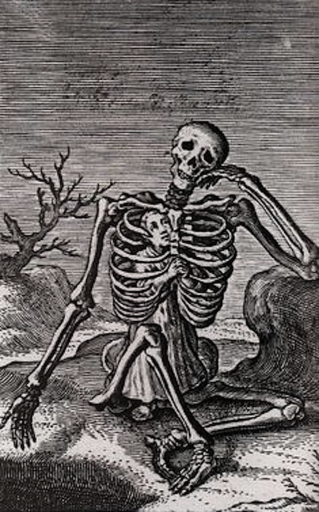


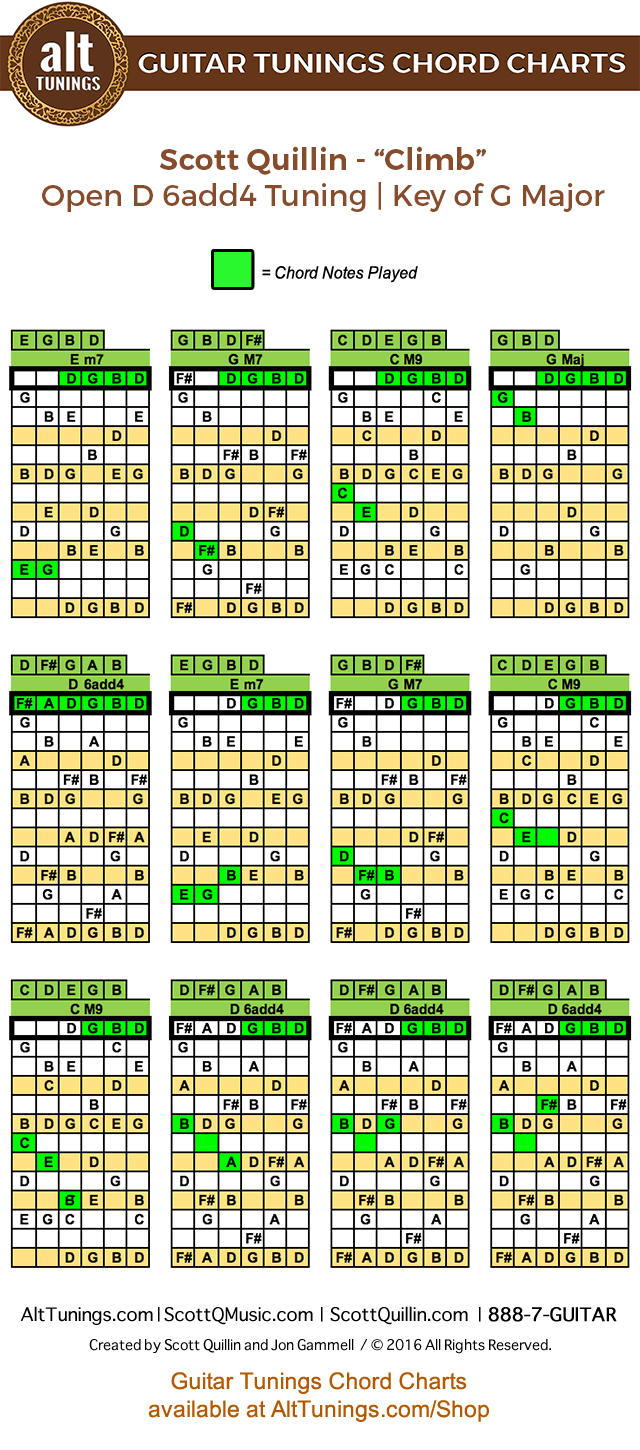
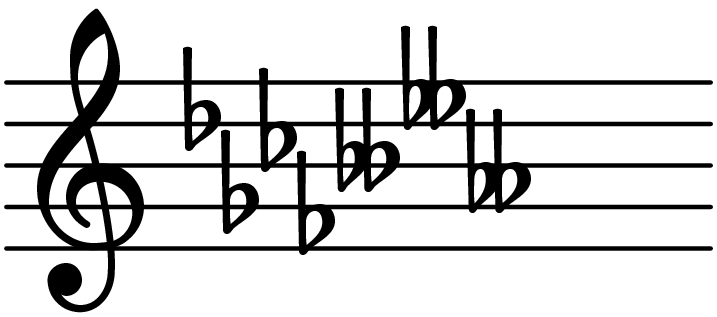




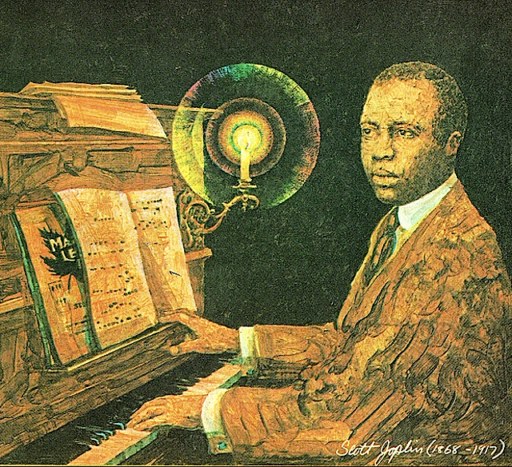

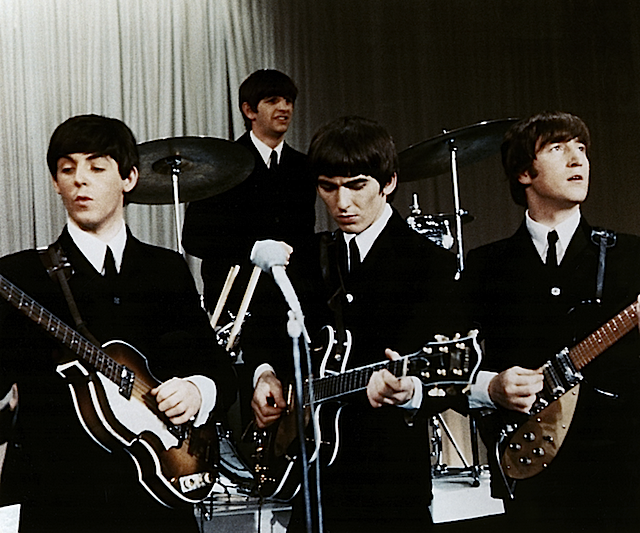


No comments:
Post a Comment
Note: Only a member of this blog may post a comment.